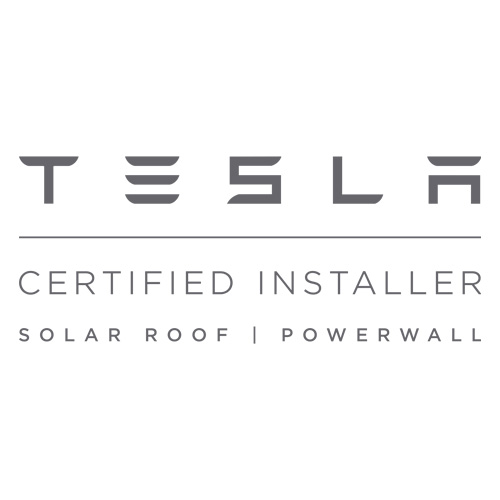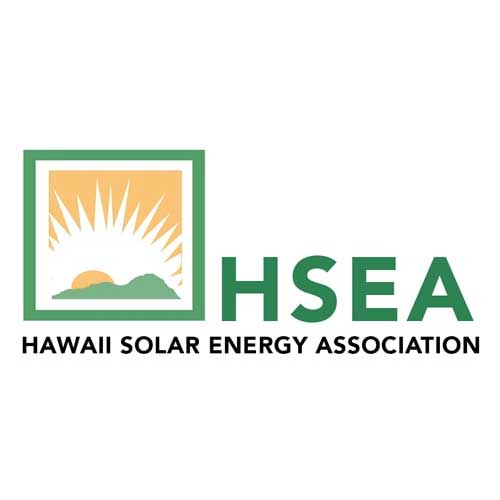Are Solar Panels Worth It For Seniors?
In Hawaii’s tropical climate, high temperatures and humidity can cause deterioration to a solar panel system over time if not properly managed. As a result, it is important to invest in quality materials and products when building your system in order to maximize its lifespan. Additionally, regular maintenance is necessary to ensure that your system is functioning properly and not suffering from any damages due to environmental factors like excess heat or moisture buildup.
While high temperatures can take a toll on a solar panel system over time, Hawaii does benefit from having some of the best sunlight exposure in the world throughout the year as well as very few overcast days during any given month. This means that solar panel systems tend to last longer here than they would in other climates with more cloud cover or extreme weather conditions.
Why Solar Panels Are Popular In Hawaii
Looking to take advantage of the high cost of electricity in Hawaii? Look no further than solar panels! In solar industry, solar panels are a popular choice for homeowners in the state because of the generous ta incentives and long warranty periods. Not only do home solar system save you money on your electricity bills, but they also have a positive impact on the environment. By reducing your carbon footprint, solar energy systems can help you feel good about yourself and your decision to invest in this technology.
Here are eight reasons why solar panels are a great option for people living in Hawaii:.
- Solar panels are popular in Hawaii because of the high energy costs of electricity. In comparison to other states, Hawaii has some of the highest rates for electricity. This means that solar panel owners can save a lot of money each month on their electric bills.
- Solar panels are also popular because of the Hawaii solar incentives offered by the state. The state offers an income tax credit as well as property tax exemptions for those who install solar panels. This makes installing solar panels an affordable and attractive option for most residents.
- Solar panels usually have a warranty period of 20 to 25 years, which is much longer than most product warranties (which typically last only 1 or 2 years). This means that you can rest assured that your system will last longer than expected – even if it does experience some degradation over time due to wear and tear (though this can be minimized with proper maintenance).
- Solar panel owners usually see their systems perform better over time than those who do not install them, even after adjusting for initial system performance differences (due to sunlight exposure). Studies have found that average life expectancy for residential photovoltaic modules is approximately 20 years or more – which is significantly longer than typical product warranties!
5.Solar power systems typically add value to homes by increasing their marketability – especially during times when home values are decreasing nationwide.. In many cases, installing a PV system has even increased home prices!
6.Solar power systems typically pay themselves off within 10-15 years, providing long-term savings on solar panel cost without any extra work from you or your household members! And finally…
7.Many people find that they enjoy having more control over their energy usage and live happier lives when using sustainable technologies such as solar power rather than relying solely on fossil fuels like gasoline or coal fired plants…especially when these technologies offer tangible benefits like lowered energy bills – without sacrificing qualityof life or comfort!
How Solar Panels Work In Hawaii
Solar panels work by using a series of photovoltaic cells which are arranged together in a panel. These cells absorb light from the sun and convert it into electrical current through a process called the photovoltaic effect. The output from these cells is then transferred to an inverter where it is converted into usable electricity for powering lights, appliances and other electronic devices.
The amount of electricity produced by solar panels depends on several factors such as weather conditions, sunlight intensity, number of photovoltaic cells, cable length, angle of solar installations and maintenance requirements. In Hawaii, the average amount of power generated per day by solar panels is around 4-6 kWh/m2 which is higher than most states in the US mainland due to its high levels of sunshine year round.
One advantage of installing solar panels in Hawaii is that they produce more electricity during sunny days compared to other states with less favorable weather conditions. This makes them particularly suitable for powering homes or businesses that require consistent energy production throughout different seasons. Another advantage is that they offer a great return on investment when considering their long lifespan and low cost maintenance requirements compared to traditional energy sources such as coal or oil-fired plants.
How Long Do Solar Panels Last In Hawaii?
Solar energy system has been gaining popularity in recent years, and Hawaii is no exception. Solar panels provide a reliable and sustainable source of renewable energy that can help reduce the islands’ dependence on imported fossil fuels and improve air quality. With its ample sunshine, it’s no wonder that Hawaii residents are increasingly turning to solar power for their homes and businesses. But one of the key questions when considering solar installation is: How long do solar panels last in Hawaii?
In terms of sunlight exposure, Hawaii offers an ideal environment for solar panel production thanks to its abundant sunshine throughout most seasons and regions in the state. The average peak daily sun hours per year in Hawaii range anywhere from 4 to 7½ hours depending on location – one hour more than other parts of the mainland United States. This means that your solar panels will receive plenty of sunlight and produce optimally for a longer period than many other states.
How To Keep Solar Panels Running For A Long Time In Hawaii
The first step is ensuring that you have high-quality solar panels installed. Hawaii has incredibly intense sunlight, sometimes even more than average from other parts of the US. This means that lower quality materials used in cheaper solar panels may not be up to the task of withstanding the intensity and will fail prematurely. Investing in high-quality solar panels will pay off in the long run as they will last longer and require less maintenance over their lifetime.
The second step is making sure that your solar panel system is set up correctly. This includes checking the angle of solar power installation and orientation so that your solar panel system can capture as much sunlight as possible throughout the day. It’s also essential to clean off any debris or dust from your solar panels on a regular basis since this can block out valuable sunlight and lower efficiency levels significantly if left unchecked.
Thirdly, you should ensure that your wiring is all set up properly too, particularly if you decide to add additional solar battery or other components later on down the line. You should always get professional help when it comes to wiring since mistakes can lead to potential electrical shorts which may cause significant damage over time if not attended to promptly enough.
What Type Of Solar Panel Is Best For Hawaii?
How To Choose The Right Solar Panel For Your Home In Hawaii
The state of Hawaii enjoys an abundance of sunshine and a temperate climate, making it an ideal location for solar energy production. Solar panels are a popular choice among homeowners in Hawaii because they offer clean, renewable energy with a low maintenance cost. However, determining the best type of solar panel for your home can be confusing as there are several options available. In this article, we will discuss the different types of solar panels and the factors to consider when choosing which one is best for you.
Monocrystalline solar panels are made from single crystals of silicon and provide high efficiency levels of up to 20%. This makes them ideal for small rooftops or areas with limited space that need maximum power output from minimal surface area. Monocrystalline panels can also soften their electricity production rates if they become too hot, making them more reliable and versatile in fluctuating temperatures. However, these panels tend to be more expensive than other types due to their higher efficiency levels.
Polycrystalline solar panels are made from multiple crystals of silicon and have slightly lower efficiency levels than monocrystalline (around 15%-17%). These panels typically take up less space than monocrystalline and tend to be cheaper as well; however, they can also overheat more easily in high temperatures and require larger space for optimal performance.
Thin-film solar cells are thin sheets composed of different materials such as amorphous silicon or copper indium gallium selenide (CIGS). They have much lower efficiency than monocrystalline or polycrystalline (generally around 8%-10%), but they’re usually cheaper and perfect for large-scale applications where space is limited.
When selecting the right type of solar panel for your home in Hawaii, you should consider both your budget as well as how much energy you need to generate and how much space you have available on your rooftop or property. Monocrystalline has the highest efficiency level but may be too expensive if you don’t need a lot of energy output; whereas polycrystalline may be better suited if you only need a moderate amount of energy output at a lower cost. Thin-film cells may be more affordable but they produce less power per unit area so they will require larger amounts of land or rooftop surface area to generate enough electricity.
What Are The Disadvantages Of Solar Panels In Hawaii?
One major disadvantage of solar panels in Hawaii is the limited amount of sunlight they will receive each day. Due to its location near the equator, much of Hawaii sees significantly less sunshine than other states in the US. This means that on some days, solar panels may not perform as well as expected due to lower levels of direct sunlight or clouds blocking out much needed UV rays. This can lead to decreased efficiency and less overall power generated from your solar array.
How Solar Panels Work And Disadvantages In Hawaii
The first disadvantage of solar panels in Hawaii is their high cost. Solar panel installation is a significant investment, as the solar panels cost of equipment and installation can be quite costly.
The initial cost for installing a solar systems can range from around $10,000 to $50,000 depending on the size and complexity of your system. Additionally, you will need to factor in any applicable property taxes or permits when calculating your total costs.
Another disadvantage of solar panels in Hawaii is the limited availability of natural sunlight that they receive throughout the year due to frequent rain showers. In addition to this, cloudy days are also common which can significantly reduce the amount of power produced by your panels.
This means that even if you do invest heavily into installing an elaborate system, it won’t always be able to meet your electricity needs during these times since there won’t be enough sunlight available for them to convert into energy.
In addition to this, solar system take up a significant amount of space which may not always be ideal for homeowners living on small lots or with limited roof space that cannot accommodate large arrays.
Furthermore, if you live near trees or other structures then they may cast shadows over your panels during certain times of day reducing efficiency even further with reduced amounts of direct sunlight being received by them at those times.
Are Solar Panels Worth It In Hawaii?
When it comes to solar panels, Hawaii is a hot spot. Not only are the sun and weather conditions perfect for solar panels, but the state also has some of the highest electricity rates in the country. Why? Simply put, solar panels in Hawaii have a lifespan of about 25 years – much longer than average!
Not only will solar panels reduce your electric bill, but they’ll also increase the value of your home. In addition, you’ll save money on your groceries and other utilities. The bottom line? Solar panels are a great investment – especially in Hawaii!
How Long Solar Panels Last In Hawaii
The lifespan of a solar panel depends on several factors. Sun exposure, temperature, weather conditions, and type of installation can all affect how long a solar panel will last.
Generally speaking, however, most solar panels should last at least 25 years under optimal conditions. The majority of manufacturers offer warranties for 20 years or more as well.
In relation to Hawaii specifically, solar energy is plentiful year-round due to its location near the equator. This means that there is typically adequate sun exposure throughout the year for your solar panels to perform at their highest potential.
In addition, temperatures rarely reach extreme highs or lows which can cause damage over time if they are not sustained properly by your system.
However, there are certain factors that may shorten the lifespan of your solar panels in Hawaii such as saltwater corrosion from wind-driven sea spray and moisture accumulation due to high humidity levels in coastal areas.
The installation process is also important — make sure your chosen installer has experience with Hawaiian climate conditions so that your system can be adequately protected from these external elements.
What Are The Steps To Get Solar Panels In Hawaii?
If you’re looking to reduce your electric bill and help the environment, solar panels are a great option. Not only do they save you money on your electric bill, but they also generate power during the day when you need it most. To get started, here are the five steps that you need to take.
Step 1: Find an Installer
Finding an experienced and reputable installer is the first step to getting solar panels installed in Hawaii. Start by researching local installers who have experience working with the Hawaiian climate.
Investigate reviews and ask for referrals from friends or family members who have had solar panels installed. Once you’ve narrowed down your options, contact each installer to discuss their services and quotes.
Step 2: Consider Financing Options
Solar panel installation is a significant investment, but there are several financing options available to help make it more affordable. Many residents of Hawaii are eligible for federal solar tax credit that can offset the cost of installation significantly.
Additionally, there are several other loan programs available specifically for solar panel installations through banks and credit unions that often offer lower interest rates than traditional loans.
It’s important to shop around and compare different financing options before making a decision on how to pay for your installation.
Step 3: Submit Your Permit
Once you have chosen a financing option and selected an installer, it’s time to submit your permit application for solar panel installation in Hawaii. The application process varies depending on where exactly you live so make sure to check with both your county and city governments for specific requirements regarding permits for residential or commercial projects.
Also be aware that some municipalities may require additional paperwork such as site plans or architectural drawings prior to permitting so set aside extra time when submitting applications if required.
Step 4: Have Your System Installed
Once all necessary paperwork has been filed, your installer will begin the installation process which typically takes one or two days depending on the size of your system and any unforeseen obstacles such as trees blocking sunlight or challenging roof angles that need to be adjusted during construction.
Most contractors will provide all necessary equipment and materials needed including mounting brackets, racking systems, wiring, inverters—essentially everything needed except the actual PV modules themselves which will have already been ordered based on specifications provided by your installer during the initial consultation phase of the project.
It’s important not only during installation but also afterwards to ensure regular maintenance checks are done to keep equipment running optimally throughout its life cycle—something most contractors should include with their service package upon completion of construction work but double check this ahead of time when hiring an installer if it is not explicitly stated in their contract terms.
How Long Do Solar Panels Last?
If you’re looking to invest in a renewable energy source, look no further than solar panels. Solar panels in Hawaii usually have a lifespan of around 25 years, and regular maintenance can help keep them functioning properly for years to come. However, there are a few things that you should know about solar panels before making the decision to buy them.
For example, solar panels may start to degrade after 10 years or so. This is because they’re exposed to the sun and elements on a daily basis. However, regular maintenance can help prolong the life of your solar panel by keeping it clean and free from debris.
Additionally, solar panels are a great investment for homeowners in Hawaii because they can save you money on your electric bill – even during peak hours – and they’re good for the environment too.
By installing solar panels, you’re helping to reduce emissions from traditional energy sources like coal and oil. So whether you’re looking to save money or help protect our environment – go ahead and install some solar panels!
To Wrap Things Up
Overall, investing in quality equipment along with proper installation techniques and regular care are key factors when determining how long solar panels will last in Hawaii; however no matter how prepared you may be there is no guarantee that they will last 20-30 years exactly.
It really depends on environmental conditions such as temperature extremes, humidity levels, salt air exposure, etc., so periodic monitoring & maintenance should still be practiced even after installation completion in order preserve & extend its useful life for as long as possible under Hawaiian condition.









